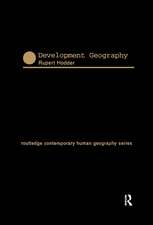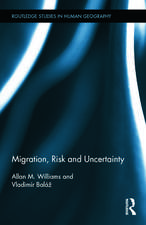The Western European Economy: A geography of post-war development: Routledge Library Editions: Economic Geography
Autor Allan M. Williamsen Limba Engleză Hardback – 23 mar 2015
| Toate formatele și edițiile | Preț | Express |
|---|---|---|
| Paperback (1) | 161.43 lei 43-57 zile | |
| Taylor & Francis – 28 feb 2017 | 161.43 lei 43-57 zile | |
| Hardback (1) | 707.10 lei 43-57 zile | |
| Taylor & Francis – 23 mar 2015 | 707.10 lei 43-57 zile |
Preț: 707.10 lei
Preț vechi: 862.31 lei
-18% Nou
Puncte Express: 1061
Preț estimativ în valută:
135.30€ • 141.65$ • 111.95£
135.30€ • 141.65$ • 111.95£
Carte tipărită la comandă
Livrare economică 07-21 aprilie
Preluare comenzi: 021 569.72.76
Specificații
ISBN-13: 9781138859593
ISBN-10: 1138859591
Pagini: 358
Dimensiuni: 156 x 234 x 30 mm
Greutate: 0.64 kg
Ediția:1
Editura: Taylor & Francis
Colecția Routledge
Seria Routledge Library Editions: Economic Geography
Locul publicării:Oxford, United Kingdom
ISBN-10: 1138859591
Pagini: 358
Dimensiuni: 156 x 234 x 30 mm
Greutate: 0.64 kg
Ediția:1
Editura: Taylor & Francis
Colecția Routledge
Seria Routledge Library Editions: Economic Geography
Locul publicării:Oxford, United Kingdom
Public țintă
General, Postgraduate, and UndergraduateCuprins
Part 1: The International Context 1. The Post-War International Economy 2. Capital, Labour and the State in Western Europe Part 2: The Sectors 3. Energy 4. The Primary Sector 5. The Secondary Sector 6. The Tertiary Sector Part 3: The Regional Dimension 7. Uneven Regional Development and Regional Policies 8. Selected Regional Case Studies 9. Concluding Remarks
Descriere
This book, originally published in 1987, presents a broad overview of the spatial organization of the European economy, providing a valuable synthesis of recently published material by geographers and other social scientists. A major theme is the interdependence of economic development at various scales. The three main sections look at international and European economic context; detailed changes in particular sectors; specific types of regional economic formations. Case studies are used and reference made to historical processes.




































